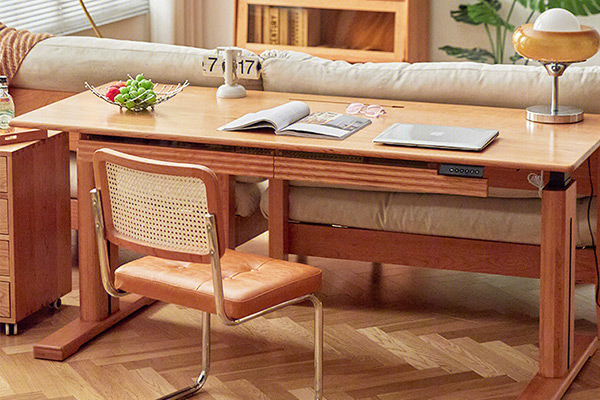A New Standard for Office Health: Ergonomic Standing Desk Converter Design
With growing awareness of a healthy office environment, standing desks have become a staple in modern workplaces. However, simply owning a standing desk doesn't guarantee good health. The real transformation lies in how a standing desk is integrated into a complete workstation based on ergonomic principles. This is not just about spinal and neck health; it's also about our productivity and long-term well-being.
Why "Just a Desk Isn't Enough"
Many believe that simply being able to stand at work will solve the problem of prolonged sitting. But the core of ergonomics is coordination. A good Standing Desk Converter requires all equipment to be in a position that suits the body's natural posture. If the desk is raised, but the monitor, keyboard, and mouse remain in an awkward position, new health issues (such as shoulder tension and wrist strain) will emerge. Therefore, designing a Standing Desk Converter is a systemic project, not just a simple assembly of equipment.
Design Core: Three Key Ergonomic Principles
To create an ideal standing desk workstation, you must follow these three core principles:
1. Dynamic Balance of Sitting and Standing:Ergonomics emphasizes dynamic work rather than static sitting or standing. The ideal pattern is to switch between sitting and standing every 30-60 minutes. A standing desk provides the foundation for this dynamic, but more importantly, it helps build a habit. Consider using a smart standing desk with a built-in timer to remind you to switch positions regularly, making dynamic work a natural habit.
2. Coordinated Height and Angle of Core Equipment:
Monitor: The top of the screen should be at or slightly below eye level, with a distance of 50-70 cm between your eyes and the screen. A monitor arm is crucial for achieving this. It allows for easy adjustment of the screen's height, angle, and distance, ensuring your line of sight is level whether you're sitting or standing, effectively preventing neck fatigue.
Keyboard and Mouse: Whether sitting or standing, your elbows should be bent at a natural 90-degree angle, and your wrists should remain straight. This means the keyboard and mouse height should be aligned with your elbow height. If the desk height is unsuitable, consider using an adjustable keyboard tray to achieve the optimal position. Choosing an ergonomic split keyboard and a vertical mouse can further reduce pressure on your wrists and forearms.
3. Optimized Space and Storage:A healthy office environment also needs to be tidy and organized. A cluttered desk can increase psychological stress and affect productivity. When designing your Standing Desk Converter, consider storage solutions. For example, use cable management trays to hide messy wires and hanging storage baskets or drawers for frequently used items. A neat environment helps you focus on work, reducing unnecessary body twisting and movement, thereby maintaining proper posture.
Building Your Ideal Workstation: A Practical Guide
Step 1: Choose the right standing desk. Consider the desk's stability, lifting speed, noise level, and whether it has smart memory functions. Dual-motor desks are often more stable and quieter than single-motor desks.
Step 2: Invest in a monitor arm. This is key to achieving free height adjustment of your screen. Whether you have a single or dual monitor setup, a good arm will let you easily find the most comfortable viewing angle.
Step 3: Optimize your keyboard and mouse. Experiment with ergonomic keyboards and mice, and ensure their height is aligned with your elbows.
Step 4: Pay attention to the details. Consider using an anti-fatigue mat to reduce foot and leg pressure when standing, and choose a high-quality, ergonomic chair to provide solid support when sitting.
Conclusion
Designing a Standing Desk Converter is an art of detail and balance. It's not just about purchasing new office equipment; it's about integrating ergonomic principles into your daily work through scientific planning and adjustments. When every piece of equipment precisely serves your body's natural needs, the office is no longer a health "threat" but a productive, comfortable, and vibrant haven for well-being. This is our new definition for a healthy office standard.





